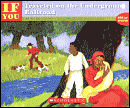
Author: Sally Morgan
Synopsis:
This is a book that describes what a penguin is, what some types of penguins are, where they live, how they grow and learn. It describes what they eat, the dangers they face, and how they live in freezing conditions.
Pre Reading Activity:Questions:
Who has seen a penguin? What do penguins eat? Where do penguins live?
Who has seen a penguin? What do penguins eat? Where do penguins live?
Activity:
Have the class make a list of all the things they know about penguins, and what they want to learn about penguins, using a K-W-L chartPost Reading Activity:
Questions:
What is one type of penguin? Do penguins go to kindergarten? What is kindergarten for penguins? Questions:
Activity:
After reading the story, watch a movie about penguins. The march of the Penguins is a good documentary about penguins. Have the students write two similarities about penguins between the book and movie.Reflection:
I think this book is a great way to introduce animals to students. When students can take a journey into the life from the animals perspective it builds great background knowledge for the students, giving them a deeper understanding and appreciation for the animals they learn about.
I think this book is a great way to introduce animals to students. When students can take a journey into the life from the animals perspective it builds great background knowledge for the students, giving them a deeper understanding and appreciation for the animals they learn about.























